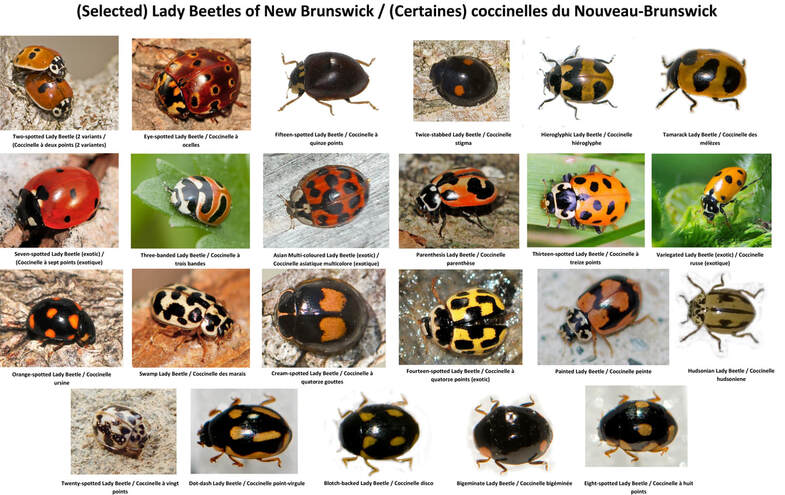
Text and images by Denis Doucet
One of my favourite outdoor activities during the first warm days of spring is to look for Lady Beetles around our farm.
“Wait, what are ‘Lady Beetles’?,” you may ask.
“I thought they were ‘Ladybugs,’” you say.
Technically, “Ladybugs” are a kind of beetle (beetles represent the largest order of insects with 300,000+ species). Like other beetles, their first set of wings are all leathery and not for flight. True “bugs,” such as stink bugs, assassin bugs, plant bugs and more, are all part of the Hemiptera Order. The first set of wings of Hemipterans are half leathery and half clear. Now, on with my story, and I trust you now know why I am calling them Lady Beetles.
Of course, the invasive Asian Lady Beetle (Harmonia axyridis) which now overwinters inside our homes can be seen just about any time of year. This is because it can awaken and be active outside (as well as inside) on any warm day during the winter and early spring. I am not quite as excited about finding them compared to finding other species, since they are now so widespread and easy to find. Asian Lady Beetles are now some of the most widespread Lady Beetles in the Canadian Maritimes and much of North America along with two other common, introduced (adventive/exotic) species, the Seven-spotted Lady Beetle and the Fourteen-spotted Lady Beetle.
The Asian Lady Beetle has caused some folks to have more mixed emotions about Lady Beetles in general, as they can be abundant, and if enough of them are in your house, they can even leave a detectable odour. If handled, they can pinch (mind you, a few of our native species can, too)! It's hard to believe they have only been in the Maritimes since around 1995. It’s equally hard to believe how quickly they spread across North America since their successful introduction in Louisiana in 1992. I should mention at this point that even though they, like other Lady Beetles, are very good at eating pests such as aphids, some introduced species have had a negative impact on certain native species of Lady Beetles. This effect, along with a few other factors, means some Lady Beetle species are now considered “at risk” of disappearing from our midst. Habitat loss, pesticide use and climate change are likely also significant contributing factors in the decline of some of our native species.
I have included images of some of our more common species, along with notes as to whether they are native or introduced. Below, I list a few links to where you can learn more about their awesome life history, more about how things are changing and what is being seen in our neck of the woods and elsewhere in North America. Please share your images of the Lady Beetles you find around your home with Connecting Albert County.
If you also want to learn more and try your hand at doing a little citizen science with Lady Beetle finds, check out the Lost Ladybug Project (www.lostladybug.org) or join the Lady Beetles of Atlantic Canada project on iNaturalist (inaturalist.ca/projects/lady-beetles-of-atlantic-canada-coccinelles-des-provinces-de-l-atlantique). Heads up to educators and parents: The Lost Ladybug Survey has many great educational resources about Lady Beetles on its site, along with the interface to add your observations. Happy spring, and Happy Lady Beetle spotting!
Spot the puns! In addition to searching for spotted Lady Beetles, check out how many times Denis has added puns about “spots.”


 RSS Feed
RSS Feed